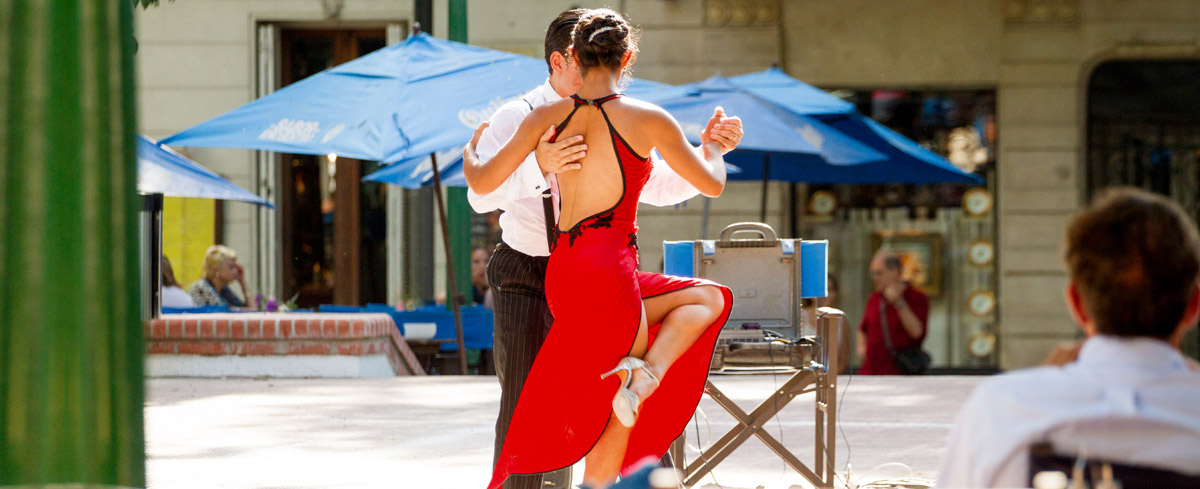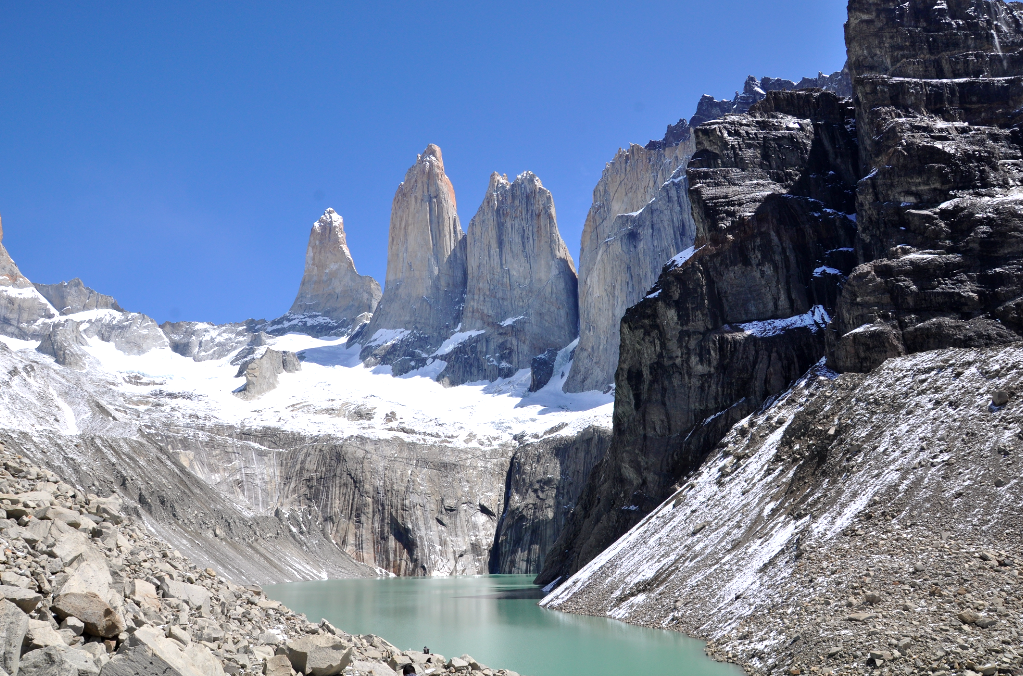

Buenos Aires, geographically located in Latin America but it feels like I have stepped into Europe. People dress like chic Parisians while uttering a dialect of Spanish which I have to try hard to interpret them, with Italian style architecture surrounding the city. There is a mix of elegant mansions lining cobblestone streets to slum shelters surrounding the poorer suburban areas. Taking the metro is an interesting ride because you will encounter many vendors or beggars all trying to earn some money to survive the higher costs of living.
The party only starts at 2am and goes on until the wee morning hours. y favourite neighbourhoods or barrios to visit would be Palermo, San Telmo or Recoleta, where you will encounter porteños, as the local populace is called, whiling away hours at sidewalk cafes drinking expresso and arguing over politics, the sad state of the country’s economy or yesterday’s futbol match. It is hard not to fall in love with this beautiful city in South America during my two months stay in the country.

Bosque de Palermo
Bosque de Palermo is the largest green expanse of the city. It contains a rose garden, an arts museum, and a planetarium to spend time with your children or just a place for people-watching. The equivalent to New York’s Central Park, it also features man-made lakes with pedal boats for rent.
The Japanese garden was opened in 1967 at its current location, occupying a part of the Parque Tres de Febrero, in Plaza Sicilia. Is located in Adolfo Berro Avenue and front of the Alemania square. The demolition of the original Japanese Garden in the Retiro area led to the 1967 opening of the current Buenos Aires Japanese Gardens, the World’s largest outside Japan.
Recoleta by bike
Recoleta is a downtown residential neighborhood in Buenos Aires. It is an area of great historical and architectural interest, due to its Beaux-Arts architecture as well as the distinguished Recoleta Cemetery, known for its dark tourism.
A convenient way to get around Recoleta neighbourhood is to rent a bike from Eco-bici. Check out the weekend flea market or indulge in retail therapy at Recoleta Mall. Pop into this upscale mall which will whet your appetite with local boutiques to international brands. For the cultural elite, there is a literary café, Clásica y Moderna, located on Callao Avenue at Paraguay Street.

Set in 5.5 hectares (14 acres), the site contains 4691 vaults, all above ground, of which 94 have been declared National Historical Monuments by the Argentine government and are protected by the state. There are several famous people buried here, including former presidents and Eva Peron. Wander down the leafy avenues and narrow alleyways, which evokes the feeling of walking in the city for the dead. Flowers adorn graves and also tombstones, with some young faces that surprised me at how short their life was.
Botanical Garden
After a grotesque stroll around Recoleta, do hop over to the nearby Botanical Gardens. The garden features French, Roman and Japanese styles of landscaping with plants and trees from around the globe. It is a place to walk, relax and discover a range of plants and trees native to Argentina, and other regions.
The grounds also contain a large collection of sculptures and an English-style house used to host temporary art exhibitions and workshops. The city government’s gardening school also functions on the site, which was founded by French landscaper Charles Thays, who designed many of the city’s parks and squares, and was inaugurated in 1898.
Caminito
Buenos Aires famous colourful street art museum. Located in La Boca, the Caminito (little path, in Spanish) is a street museum of colourful painted houses typical of the immigrant dwellings that came to chracterise this portside area towards the end of the 19th and start of the 20th century.
Today, there are several works by Argentine artists incorporated as part of the street museum and the Caminito has become a favourite with visitors to the city. Several restaurants offer tango and folk dance shows and street fills with artists offering original crafts and paintings. Beware of the tango touts who pretend to be friendly and ask you to take photos with them, but end up extorting unknowing tourists for money.

Food and drinks
La Ferneteria: you can smell the wood, velvet and freshly baked food. A great countertop at sight is the perfect setting where the pastas are mashed in the moment using the best semolina in the country. It is also a place to sip on craft cocktails amid an Italian setting.
Cafe Tortini : It is the oldest and perhaps best preserved of the city’s many officially recognised historic cafés. Founded in 1858, this elegant venue was named after a café in Paris and was frequented by politicians and writers. The façade on the Avenida de Mayo was designed by the architect Alejandro Christophersen in 1898.
Bahamas: sounds like a Caribbean restaurant? Located in the Costanera Norte, facing the river, it was originally an ice cream store and was transformed into what it is today: a place to visit at any time of day, from 8 am, when opening its doors until 2 am, when the lights go out.
Santos Manjares: A traditional Argentinean steakhouse selling all cuts of beef and also a place for having a BBQ. Specializing in charcoal grill, good service in the city and the incomparable attention. Definitely a place for meat lovers.
Frank’s Bar: getting into this underground speakeasy is hard the fun. (Follow it on Facebook for a weekly password). Once inside, the Prohibition era theme seduces with damask wallpaper, red velvet settees and killer cocktails.
La Cocina Pueyrredon 1508: definitely a place to get some empanadas. They are part of the Argentine DNA, and many provinces have their own recipe: from Salta, Santiago del Estero to Tucuman; some are sweet, others are spicy; but they are all delicious. They can be baked or fried, and some add a pinch of sugar on top.
Isabel Bar & Restaurant: Really interesting entrence which doesnt give away this small pearl in Palermo Soho. Great and really classy interior which was thought of with great care for every detail. Sushi was fresh and with a wide variety to suit different tastebuds.
Siamo nel Forno: Traditional wood fire pizzas. The pizzas are made from scratch and come with generous toppings.

Perhaps the biggest attraction of Buenos Aires is the city’s people. No matter how long you stay, you are bound to make friends and feel at home. Porteños are one of the warmest and friendliest people I have met on the continent. They greet with a hug and a kiss (even strangers), and talk for hours over a dinner or a drink. Expect to be engaged in conversations on all topics, to be invited to try mate, the local infusion and a social ritual in itself, to receive help whenever you need it, and to be made to feel welcome at all times.
Travelling to Buenos Aires
Travellers from many countries, including all EU/EEA citizens, as well as (amongst others) citizens of Canada, New Zealand, Japan, South Korea, Hong Kong, Singapore, and the United States of America may enter Argentina for up to 90 days without a visa.

Buenos Aires has two airports. The city is Argentina’s international gateway and easily accessible from North America, Europe, and Australia, as well as other capital cities in South America. The main airport for international flights is Ezeiza International Airport, about 35 km south of Buenos Aires. Most domestic flights, as well as many flights to and from neighboring countries (Uruguay, Brazil, Chile and Paraguay) use the smaller but more convenient Aeroparque Jorge Newbery airport, nearer to downtown Buenos Aires.


